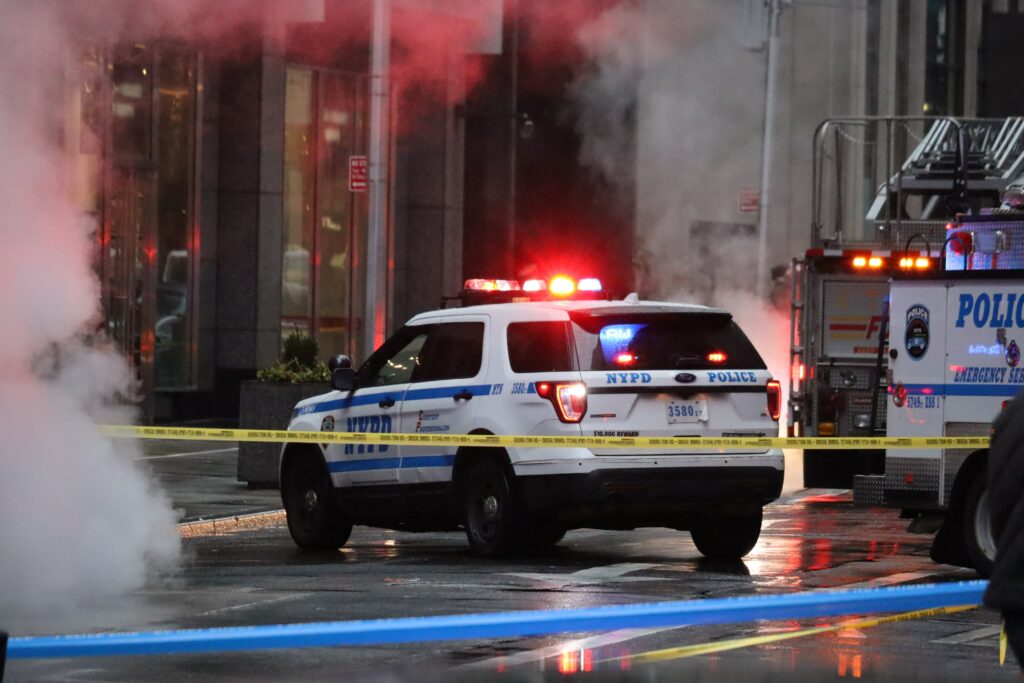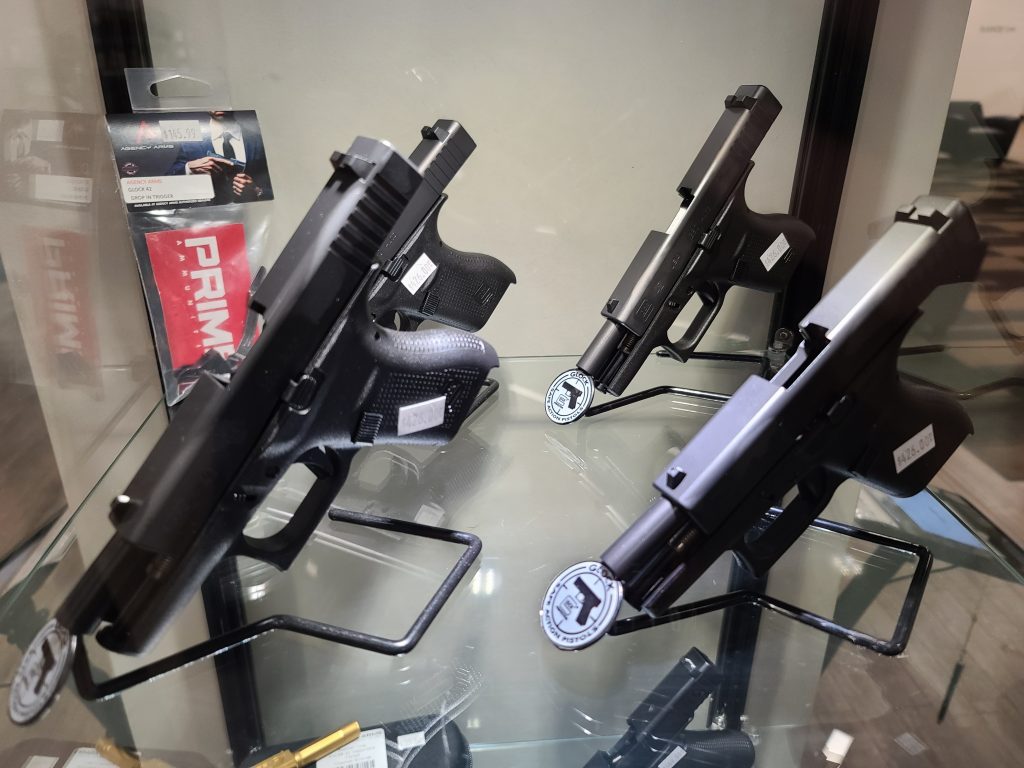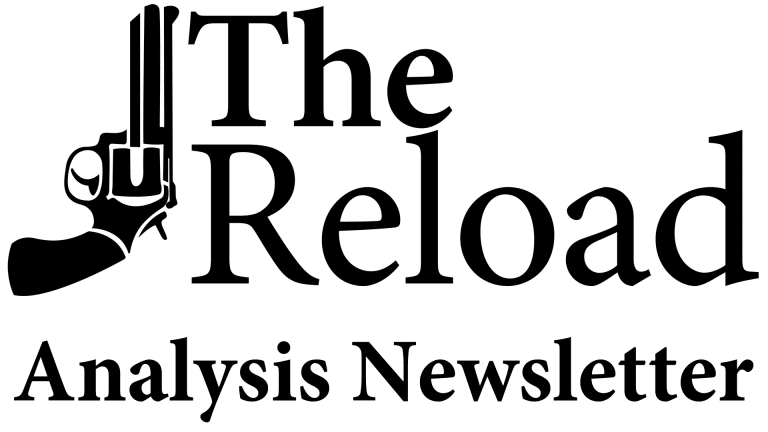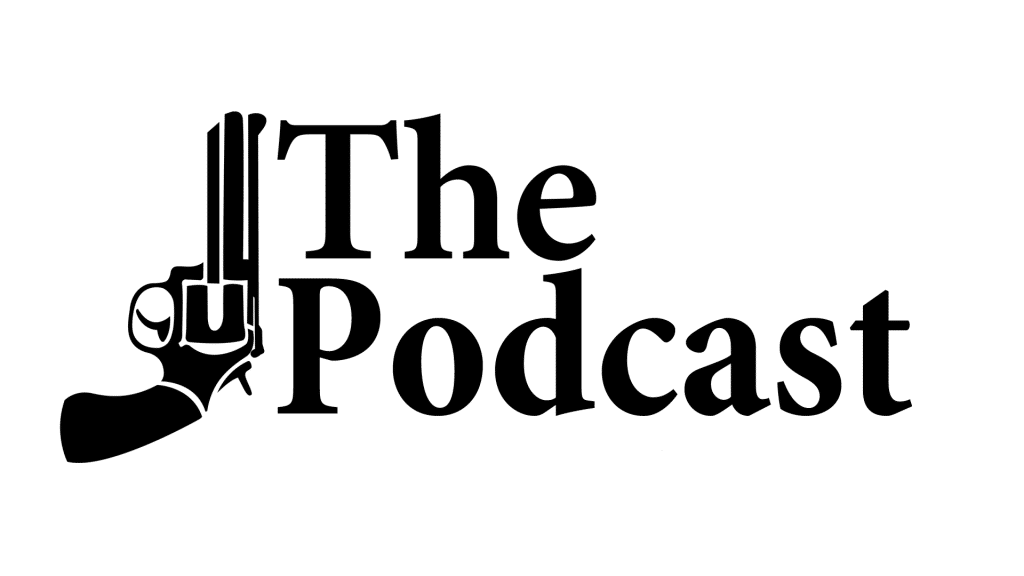Murder has been rising since the pandemic began. In cities across the country, the murder rate has climbed for two years straight. It has impacted countless Americans.
But, as a new contribution from Konstadinos T. Moros examines, whether you’ve felt this effect depends largely on where you live. The disconnect between high-crime cities and low-crime ones persists. What causes that disconnect is up for debate, and Moros offers his view, but I think most people aren’t even fully aware of how stark the contrast is between different parts of the country.
Contributing Writer Jake Fogleman dives into another topic: the onslaught of lawsuits against San Jose’s new gun-control ordinances. Will those suits put off other localities from going down the same path?
Plus, Philip Smith joins the podcast to talk about NAAGA’s recent complaints with what President Biden is doing to the ATF.

Analysis: The Shockingly Uneven Distribution of Homicide in the United States [Member Exclusive]
By Konstadinos T. Moros
By now, everyone is aware that the United States has been going through a crime surge that has dramatically increased homicide in our country. The overall murder rate is at a multi-decade high of 6.9 per 100,000, with around 22,735 murders in 2021. Gun-control advocates have already taken to blaming guns for this increase.
But while nearly every part of the country has seen an uptick in violent crime, what has not changed is that murder in the United States is still not spread out equally. For people who live in most parts of the country that are not dealing with a major violent crime problem, this creates a disconnect between what we hear on the news about the ever more dangerous state of the country and what we actually experience in our day-to-day lives. In that context, calls for more gun control sound not just unwise but like a solution in search of a problem, as gun violence is simply not a statistically significant threat to most of the country.
Growing up in San Diego, I always thought it was bizarre how Europeans (and many gun-control advocates) talked about the United States as if it were some crime-riddled wasteland. I felt every bit as safe in my hometown as I did visiting family in various cities in Greece. I would only learn much later that that was because San Diego has a very low homicide rate for an American city, with about 4.1 homicides per 100,000 people in 2021. In fact, San Diego has the lowest homicide rate of any of the big-three California cities by far. This despite it also being the friendliest to gun rights of the three (relative to California anyway). San Francisco chased out its last gun store in 2015, yet has a homicide rate about 60 percent higher than that of San Diego. Los Angeles is more than double San Diego’s rate, with 10.1 murders per 100,000 people.
This divergence in results just between big cities in my home state made me interested in the overall concentration of homicide in the United States. Here is the list of 20 large cities in the United States which claimed the dubious distinction of having the highest homicides rates in 2021:
- Louis, MO – 199 homicides, 293,310 people – 67.8 homicides per 100,000 people.
- New Orleans, LA – 218 homicides, 390,845 people – 55.8 homicides per 100,000 people.
- Baltimore, MD – 337 homicides, 609,032 people – 55.3 homicides per 100,000 people.
- Memphis, TN – 346 homicides, 651,932 people – 53.1 homicides per 100,000 people.
- Detroit, MI – 309 homicides, 674,841 people – 45.8 homicides per 100,000 people.
- Cleveland, OH – 170 homicides, 385,282 people – 44.1 homicides per 100,000 people.
- Pittsburgh, PA – 123 homicides, 302,205 people – 40.7 homicides per 100,000 people.
- Philadelphia, PA – 562 homicides, 1,603,797 people – 35 homicides per 100,000 people.
- Milwaukee, WI – 197 homicides, 594,548 people – 33.1 homicides per 100,000 people.
- Washington D.C. – 227 homicides, 692,683 people – 32.8 homicides per 100,000 people.
- Atlanta, GA – 158 homicides, 488,800 people – 32.3 homicides per 100,000 people.
- Kansas City, MO – 157 homicides, 486,404 people – 32.3 homicides per 100,000 people.
- Oakland, CA – 134 homicides, 425,097 people – 31.5 homicides per 100,000 people.
- Indianapolis, IN – 271 homicides, 864,447 people – 31.3 homicides per 100,000 people.
- Cincinnati, OH – 94 homicides, 301,394 people – 31.2 homicides per 100,000 people.
- Louisville, KY – 188 homicides, 617,790 people – 30.4 homicides per 100,000 people.
- Chicago, IL – 797 homicides, 2,710,000 people – 29.4 homicides per 100,000 people.
- Las Vegas, NV – 147 homicides, 634,773 people – 23.2 homicides per 100,000 people.
- Newark, NJ – 57 homicides, 281,054 people – 20.3 homicides per 100,000 people.
- Tulsa, OK – 62 homicides, 402,324 people – 15.4 homicides per 100,000 people.
The figures in any of these cities are horrifying on their own, but they become especially tragic when compared against much safer parts of the country. Recall that San Diego’s homicide rate was about 4 per 100,000 people in 2021. That means if you live in St. Louis, your chance of being murdered is roughly 17 times higher than someone who lives in San Diego. One city has a practically European homicide rate, while the other is akin to a third-world country.
These 20 cities add up to a total population of 13,410,558 people, meaning they make up roughly 4.1% of the US population of 329,500,000 people. If the nation’s estimated 22,735 homicides in 2021 were distributed evenly, then these 20 cities would be responsible for about 932 homicides. Instead, they accounted for a stunning total of 4,753. In other words, the 20 cities above represent around 4% of our population but are responsible for 21% of our homicides. And I am confident that if I had kept going on down the list to the next 20 cities, the same trend would continue.
The trend is even apparent within individual states. Missouri, for example, has about 6,140,000 people, and a statewide homicide rate of 11.8 per 100,000 people in 2020 (2021 data for the state is not yet available). This translates to around 725 homicides per year statewide. In 2021, St. Louis and Kansas City alone accounted for 356 homicides, about 49% of the state’s 2020 total, even though they only have around 12.5% of the state’s population. If you are a Missourian who lives in St. Louis or Kansas City, you have to contend with an astronomically high homicide rate – 67.8 per 100,000 in St. Louis and 32.3 per 100,000 in Kansas City. Everyone else in the state, over 87% of its population, has a homicide rate of 6.9 per 100,000 people.
Gun-control advocates blame the availability of guns for the violence plaguing so many cities, with Rep. Eric Swalwell recently going so far as to accuse Republicans of being “the party of mass shooters.” But many of the cities above are hardly what many would call gun-friendly, with various restrictive state or local laws. Even those of the 20 cities in traditionally red states usually have a Democrat-dominated local government. For example, the last Republican mayor of St. Louis left office in 1949. New Orleans hasn’t had a Republican mayor since 1872, and Atlanta not since 1879. Currently, 18 of the cities have Democrat mayors, one Republican (Tulsa, OK), and one independent (Las Vegas, NV.) To the extent Democrats running these cities have pushed local gun-control measures, they apparently have not had enough of an effect to bring down the horrific homicide problem they face.
This assessment isn’t entirely fair of course, because most urban voters overall favor Democrats, including some in cities with low homicide rates like New York City, my hometown of San Diego, and others. Yet a closer examination shows us the flaw in such anecdotes. New York City, liberal as it may be, is not afraid to elect Republicans or Independents at times, including Rudy Giuliani in the 1990s, and Michael Bloomberg more recently. San Diego, meanwhile, may have a Democrat mayor currently, but two-term Republican Mayor Kevin Faulconer just left office in 2020. And Miami under Republican Mayor Francis Suarez was one of the only big cities in the country to see its homicide rate decline significantly in 2021, seeing a 15% reduction.
Perhaps there is something to be said for having diverse political leadership over the years, but I’ll leave it to someone more qualified to definitively determine what particular cities do right and wrong in combating crime. Regardless, what is clear to me is that the reason for the difference in perceptions on crime is due to the drastically different lived experiences of Americans. Someone in gun-friendly Boise, Idaho with its homicide rate of 1.7 per 100,000 people in 2020, simply does not understand the danger people in Baltimore or St. Louis face.
Gun control is a misguided solution in my estimation, one that condemns those who have to live in dangerous cities with a reduced ability to defend themselves even though they need their gun rights more than any of us. But it is hardly surprising to me that people will be willing to try anything they think could make their cities safer. I can certainly empathize and understand their motivation, even if I vehemently disagree with the proposed solution. Advocates of expanded gun rights must work to propose and push for solutions that reduce crime while also defending our Second Amendment rights.
The generational violence plaguing some of our most blighted cities has gone on for far too long.
Podcast: NAAGA President Philip Smith Criticizes Biden’s ATF Shakeup [Member Early Access]
By Stephen Gutowski
Philip Smith of the National African American Gun Association (NAAGA) joins the podcast to discuss President Joe Biden’s recent moves to change ATF leadership.
Biden recently picked a second nominee to head the agency. Then he demoted the acting director and replaced him with a third candidate. Smith said NAAGA is unhappy that Marvin Richardson, a Black agent with 33 years of experience, has now been passed over three times for White candidates who are less qualified for the permanent director position.
Smith said Richardson is well-liked by ATF agents and the industry alike. He argued Richardson is a non-partisan with the proper skill set to run the agency in the long term. Smith’s comments were backed up by the Black Agents and Professionals Law Enforcement Association which spoke out in support of Richardson.
He said the President is wrong to push aside Richardson in favor of other candidates. He said NAAGA was concerned with the racial dynamics of the pick but also the political implications of it. Both of the permanent director nominees Biden has chosen over Richardson have established track records as gun-control advocates. He said the President should not only reinstate Richardson to acting director but put him up as the permanent director nominee.
Smith also explained NAAGA’s view on permitless gun-carry and whether the group plans to become more politically involved as it continues to grow.
Plus, Contributing Writer Jake Fogleman and I talk about what the newest video from the set of Rust tells us about Alec Baldwin’s shooting.
You can listen to the show on your favorite podcasting app or by clicking here.
Video of the episode is also available on our YouTube channel.

Analysis: Lawsuit Deluge Threatens San Jose’s Goal of Becoming a Gun Control Trailblazer [Member Exclusive]
By Jake Fogleman
San Jose faced yet another lawsuit over its recently passed gun control ordinance this week.
On Tuesday, the Firearms Policy Coalition (FPC) filed a suit against the city in federal court, marking the third suit against the city’s novel gun law since it was first passed. It follows the immediate challenge from the National Association for Gun Rights filed in January and the challenge from the Howard Jarvis Taxpayers Association launched in March. As the legal challenges continue to mount, the experience in San Jose could have a chilling effect on other local governments considering gun ownership taxes or insurance requirements.
While lawsuits challenging new gun laws are by no means a new phenomenon, the amount of legal interest surrounding this particular city’s law is in some ways. The San Jose ordinance is the first instance of a government anywhere in the United States passing a mandatory insurance regime for gun owners. It is also the first to pass a tax on gun ownership, not just on gun sales.
The ordinance’s backers, including Mayor Sam Liccardo (D.), are quite proud of this fact. A press release from the mayor’s office dubbed the ordinance’s passing a “historic” event and emphasized the precedent the city council was setting.
“Tonight, San José became the first city in the United States to enact an ordinance to require gun owners to purchase liability insurance and to invest funds generated from fees paid by gun owners into evidence-based initiatives to reduce gun violence and gun harm,” Liccardo said the night it passed.
He also expected legal challenges, as indicated by his oft-repeated line that “no good deed goes unlitigated.”
But three lawsuits raising serious constitutional concerns before the law has even taken effect is also historic. Municipal governments do not have the same resources to defend controversial laws in court as states do. The threat of many lawsuits could be enough to cause other city governments to be more judicious about the types of policies they consider. This is especially true of novel policies passed on constitutionally dubious grounds.
And if the prospect of facing an onslaught of litigation isn’t enough to deter other municipalities, the city’s lack of progress in working out the logistics of the ordinance might.
San Jose Spotlight reported earlier this month that the non-profit tasked with collecting and distributing the new annual gun ownership fee has not yet been created, even though the ordinance takes effect in a matter of months. Additionally, the group of stakeholders tasked with advising on the formation of the non-profit has not met since January, the first and only time it ever got together.
That diminishes one of the mayor’s primary goals in proposing the tax and insurance mandate. The city of San Jose passed the law with the express intent of breaking new ground and setting an example for other localities to follow.
“With a successful effort, other cities could adopt similar ordinances, and— particularly with statewide adoption—enable greater impact, while engaging the insurance industry to incentivize safer behavior,” the mayor’s website reads.
San Jose may beat the lawsuits and work out the kinks in implementing the ordinance. But it’s more likely it does neither. That means the idea of other jurisdictions adopting a tax and insurance regime for gun owners could be dead on arrival.
San Jose’s novel gun control scheme may very well have a lasting impact. It just might not be the one its proponents hoped for.
That’s it for now.
I’ll talk to you all again soon.
Thanks,
Stephen Gutowski
Founder
The Reload






